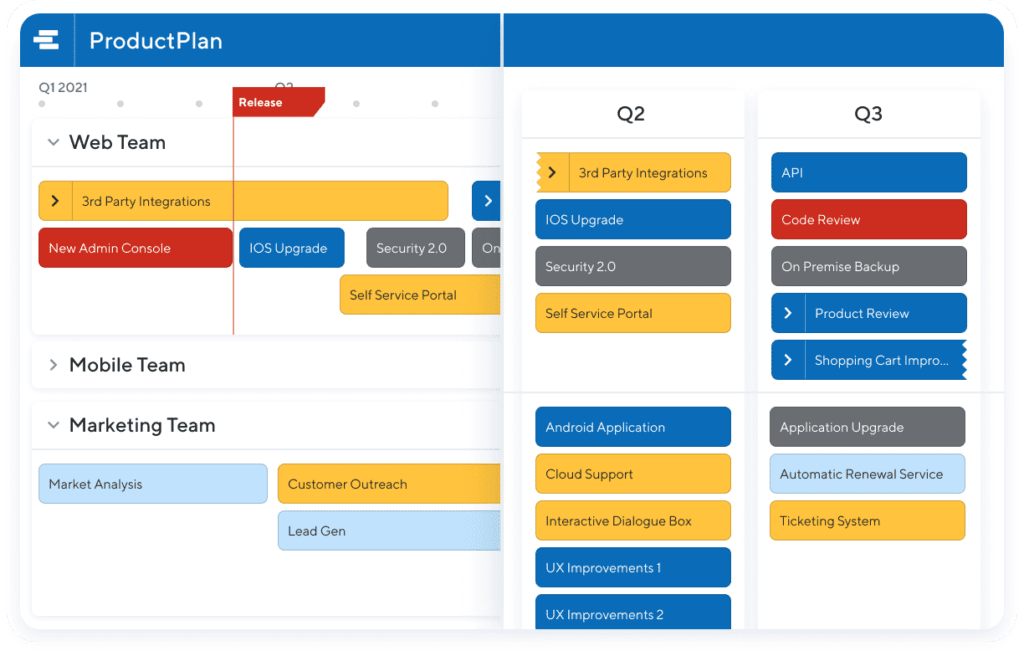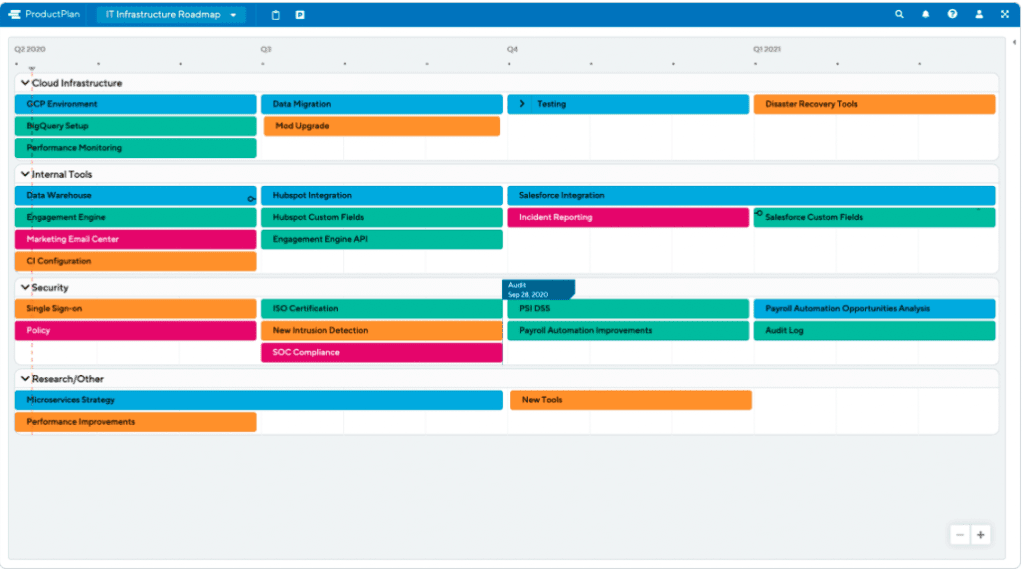ProductPlan participated as Gold Sponsors at Leading the Product’s (LTP) event, DIGITAL 2022 | USA. We are honored to be part of LTP’s first North American event. They found past success at LTP Digital | APAC and realized expanding to North America made sense for their growing audience. The event set itself apart by providing attendees with a more intimate and interactive experience.
The conference hosted world-renowned product professionals from organizations like SafetyCulture, Pendo, Zip Co. Limited, DocuSign, and Forbes and focused on the theme of product-led transformation.
The 7 T’s of Product-Led Transformation
Each speaker concentrated on one of the 7 T’s of Product-Led Transformation, including triggers, tactics, timeline, talent, tell-tales, transition, and truths. After each discussion, Brainmate’s Chief Product Officer, Kent Weathers, led a vibrant Q & A with the distinguished speakers. From there, attendees responded to a poll that would help guide a fictional Chief Product Officer, Jack, along his product-led transformation journey.
The interactive narrative allowed attendees to apply their learnings from each discussion. The learnings were then applied to Jack’s journey, which mirrored the state of organizations currently experiencing a similar transformation.
Learn how to build a product-led growth team:
Transformation trends
Globally by 2025 companies will spend about $2.8 trillion in digital transformation, according to Statista. To mitigate this spending trend, companies should consider transitioning to product-led. Those who transition or are thinking about transitioning can expect better financial results from developing a product that provides customer value.
Most enterprise companies want to develop a product that finds success on the market and can improve everyday lives. With this in mind, companies rush to transition to being product-led without establishing clear-set goals. Frankly, this is the wrong way to make the transition.
Timeline
Changes within an organization take time. The Harvard Business Review concluded that it takes at least 5 to 10 years for change to manifest itself throughout an organization entirely. In her discussion, Corinna Stukan, VP of Product at Roam Digital, honed in on this topic.
Stukan noted that organizations need to take steps to institute these changes in order to transition to a product-led company. A company culture around transformation and providing value to customers needs to be established first. Moreover, organizations should break down this transition into manageable milestones/goals.
Adobe’s transition to the cloud.
Stukan highlighted how Adobe transitioned its packaged product to a cloud-based subscription in 2012. She focused on how Adobe realized that it needed to pivot and become a product-led organization when the market for its software changed.
Creatives wanted updates and new features regularly instead of every couple of years. Subsequently, Adobe responded to their needs, and now Adobe Systems is expected to reach 19.74 million individual and team subscriptions by 2024, according to Statista. Adobe saw its recurring revenue jump to 70% in 2015, while years prior it hovered around 19%, according to McKinsey & Company. Adobe’s pivot to a cloud-based product revitalized the organization and proved that product-led organizations reap financial benefits. Though it’s essential to have a timeline for your organization’s product-led transformation, it’s now more important than ever to align your company around an agreed-upon transformation journey.
Transition
Now let’s focus on bringing us to another critical 7 T — transition. How do you transition to a product-led organization?
Hugh McLachlan, Head of Product at Safety Culture, tackled this question. McLachlan argued that change is the most challenging step in any transformation program. He challenged organizations to establish a culture of providing value to customers. Furthermore, he described it as the heart of how we build sustainable businesses.
In his discussion, he urged companies to focus on what will make the lives or jobs easier for customers. In contrast, many organizations fall into the trap of providing new features that are “nice-to-have.” Instead, companies should focus on features that offer value. Consequently, too many product teams waste time on elements that don’t contribute to easing customer pain points.
McLachlan suggests that organizations develop a company culture that encourages innovation. Leaders need to recognize mistakes and take ownership. Moreover, they must create a space that encourages knowledge sharing and learning. Organizations thrive when they establish a culture that recognizes team members’ achievements and ensures the development process is sustainable.
Start Roadmapping!
To support your organization’s transition to a product-led organization, utilizing a product roadmap can help your team stay aligned when bringing a product from ideation to market. ProductPlan’s roadmap platform can alleviate the pain of trying to gain stakeholder alignment and team cohesion. Let ProductPlan help you tell your product story.




